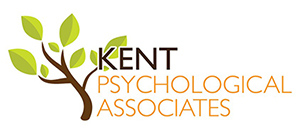Most people have heard the expression “Love Language. when referring to relationships. This term stems from the book Gary Chapman authored on this topic. A question that remains for most people however, is “How does knowing my or my partners love language impact my relationship?” Love Languages are an important aspect of our communication. Knowing your partner’s language of love and can lead to understanding or misinterpreting one their needs. Dr. Gottman, renowned relationship expert, has identified skills that lead to relationship success. Yet most important, is understanding how the love languages impact these skills.
The Love Languages Defined
First, let’s define the five love languages: Acts of Service, Quality Time, Words of Affirmation, Gift Giving, and Physical Touch. The love languages influence our communication with one another. But, communication is not the crux by which good relationships evolve. Communication is imperative to a relationship. In fact, many couples who seek counseling often identify communication as their core issue. Through Dr. Gottman’s research, what is beneath the issues of communication is much more relevant to identifying the actual issue. This is where we begin the work with a couple.
Misinterpreted Love Languages
Let me explain. If my love language is Acts of Service and my partner’s is Physical Touch – I may not naturally engage in affection with my partner as this is not how I speak “love.” Furthermore, my partner may not even identify or interpret my Acts of Service as an act of love. Vice versa, I may misinterpret his physical affection as a selfish act as opposed to an act of love. This is because I would more likely recognize the language I understand– Acts of Service. Misinterpretation of Love Languages is only part of the issue. If you cannot identify the way in which your partner may be expressing love, you are most likely missing bids for connection. Dr. Gottman identified bids for connection as any way in which your partner seeks connection. So, this results in a failure to turn towards our partners bids. Couples who have successful relationships turn toward their partners bids 87% of the time.
Understanding the Impact of Love Languages
As holidays approach, you often do your partner what you enjoy or might like or think your partner would find joy in. We can forget what it is that our significant other interprets as an act of love. For example, the husband who buys his wife an expensive bracelet thinks this is something she will feel loved by. He saw his father do the same for his mother growing up and can remember the sheer excitement on his mother’s face when she received the expensive gift. Yet, he notices his wife’s disappointment through her awkward smile as she unwraps the present. It’s clear to him something is wrong. He feels disappointed by her reaction. After all, he went to 4 different stores to the perfect bracelet that reminded him of them as a couple. An argument ensues. She interprets his gift as a last minute idea with no though put into it. He feels unappreciated for his efforts and she feels unknown. With her love language being words of affirmation, receiving a framed love letter would have been special to her.
The Breakdown
Let’s break down what occurred. Both partners had positive intent. He wanted to find the perfect bracelet so he could see the same look on her face that he remembered seeing on his mothers face as a child. He put thought and effort in finding a bracelet that she would like and one that he felt reminded him of the two of them as a couple. He made sure to put both their birthstones along with the stone that signified the month they met, as this was a turning point in his life. Receiving the gift, she tried to show excitement despite her disappointment. In essence, he did an act of service, especially if he does not enjoy going to stores or shopping. But most important, he was on a mission to find what he felt his wife would love and would remind her of their relationship. Behind the bracelet – content, you’ll find an Act of Service – the process, and it’s actually quite chivalrous.
Content Vs. Process
How often do you miss your partners intentions, miss their bids for connection, and turn away? Knowing one another, Love Maps, is the foundation of Dr. Gottman’s Sound Relationship House theory. If the couple in our example had updated love maps, the wife would have seen her husbands positive intent. She would have been aware of his dad’s extravagant gift giving every Valentine’s Day, as well as his mom’s joy in receiving it. But, if he knew her love language, he might have shared a card with the bracelet. Furthermore, he may have written a note explaining how he searched for the perfect bracelet and shared the meaning behind it.
Love Languages are important. Yet, when it comes to communication, what is more important is the process not the content. The process involves the husband shopping at 4 different stores, which he despises, but doing it for her. The bracelet represents the content. To understand the process, you must understand one another. Understanding one another involves the need to share with your partner the intricacies of your world. Turning toward our partner involves knowing our partners in ways no one else does. Missing your partners bids is more often out of one’s mindlessness not out of malice.
To learn more, download our Bids of Connection Guide to learn more about how to turn toward your partner and identify bids so they won’t be missed.
Watch our YouTube video on how Love Languages help to build Love Maps.

